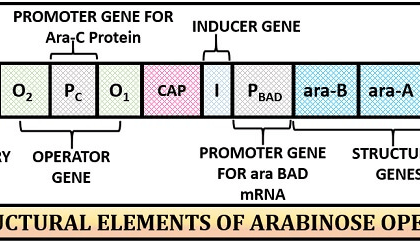Reverse Transcription
RNA dependent synthesis of DNA is known as reverse transcription. Reverse transcription is an important step in the life cycle of RNA viruses including retroviruses.
- The RNA viruses contain an enzyme reverse transcriptase that convert their RNA genome into duplex DNA. The resulting duplex DNA often becomes incorporated into the genome of the eukaryotic host cell.
- These integrated (and dormant) viral genes can be activated and transcribed, and the gene products—viral proteins and the viral RNA genome itself—packaged as new viruses.
- Reverse transcriptase was discovered in 1970 by David Baltimore, Howard Temin, and Satoshi Mizutani
Retrovirus genome
- The HIV genome, slightly more than 10 kb long and they’ve three genes denoted as gag, pol, and env.
- The gag, pol, and env genes are transcribed as single transcript. The transcript is translated into a long “polyprotein,” a single large polypeptide that is cleaved into six proteins with distinct functions.
- The proteins derived from the gag gene make up the interior core of the viral particle.
- The pol gene encodes the protease that cleaves the long polypeptide, an integrase that inserts the viral DNA into the host chromosomes and reverse transcriptase.
- The env gene encodes the proteins of the viral envelope.
- At each end of the linear RNA genome are long terminal repeat (LTR) sequences of a few hundred nucleotides.
- Transcribed into the duplex DNA, these sequences facilitate integration of the viral chromosome into the host DNA and contain promoters for viral gene expression.

Structure and gene products of an integrated retroviral genome

Reverse Transcriptase
- Reverse transcriptase, an enzyme involved in the replication of several kinds of RNA virus.
- Reverse transcriptase synthesize DNA using RNA as template.
- It carries three enzymatic activities: (1) RNA dependent DNA synthesis; (2) DNA dependent DNA synthesis and (3) RNAse H activity.
- It do not carry 3’→5’ exonuclease activity (proof reading activity), therefore it is an error-prone enzyme. RT generally have error rates of about 1 per 20,000 nucleotides added
- Many reverse transcriptases have two subunits, α and β subunits. The pol gene specifies the β subunit (Mr 90,000), and the α subunit (Mr 65,000) is simply a proteolytic fragment of the subunit.
- Reverse transcriptase contains Zn+2. Each transcriptase is most active with the RNA of its own virus, but each can be used experimentally to make DNA complementary to a variety of RNAs.
- The DNA and RNA synthesis and RNA degradation activities use separate active sites on the protein.
Reverse transcription
- Reverse transcription begins with the synthesis of a single DNA strand complementary to the single- stranded RNA of the viral genome.
- DNA synthesis is primed by a tRNA that is complementary to a sequence called PBS (primer binding site) situated to the left of center in the HIV RNA (step 1). This tRNA is packaged already bound to the PBS in the HIV core.
- After reverse transcriptase catalyzes the synthesis of the 3’ end of the viral DNA, ribonuclease H (RNase H) degrades the genomic RNA in the RNA-DNA duplex (step 2). This degradation leaves the repeated (R) sequence of the nascent DNA strand free to hybridize with the R sequence at the 3’ end of the HIV RNA.
- The net result is that the R region of the nascent DNA strand “jumps” from the 5’ end of the HIV RNA to the 3’ end of the HIV RNA (step 3).
- Reverse transcriptase next extends the DNA copy by using the 5’ region of the HIV RNA as template (step 4).

- In step 5, RNaseH degrades all the RNA in the RNA-DNA duplex except a small region, the polypurine tract (PPT), which is composed mostly of the purines adenine and guanine.
- This polypurine tract is used to prime second-strand DNA synthesis of part of the HIV genome (step 6)
- After the tRNA and the genomic RNA present in the RNA-DNA duplexes are removed (step 7), a second DNA “jump” occurs during which the PBS at the 5’ end of the second DNA strand hybridizes with the complementary PBS at the 5’ end of the first DNA strand (step 8).
- The 3’-OH of the two DNA strands are then used to prime DNA synthesis to complete the synthesis of double-stranded HIV DNA (step 9).
- Conversion of the viral RNA to viral DNA produces signature sequences at both ends of the DNA molecule called long terminal repeats (LTRs), are required for integration of the viral genome into the DNA of the host cell
FAQs on Reverse Transcription
1. What is reverse transcription, and how does it differ from standard transcription?
Reverse transcription is the process by which RNA is converted into DNA, which is the opposite of standard transcription where DNA is transcribed into RNA. This process is catalyzed by the enzyme reverse transcriptase, commonly found in retroviruses.
2. What are the key components of the retroviral genome, and how do they facilitate reverse transcription?
The retroviral genome typically consists of:
- Gag: Codes for core and structural proteins.
- Pol: Encodes reverse transcriptase, integrase, and protease.
- Env: Encodes envelope proteins for virus entry.
- LTRs (Long Terminal Repeats): Essential for integration and regulation of transcription.
These components are crucial for the successful replication and integration of the retroviral genome into the host DNA.
3. How does reverse transcriptase function at the molecular level?
Reverse transcriptase has multiple enzymatic activities:
- RNA-dependent DNA polymerase: Synthesizes a complementary DNA strand from an RNA template.
- RNase H: Degrades the RNA strand of the RNA-DNA hybrid.
- DNA-dependent DNA polymerase: Synthesizes a second DNA strand, forming a double-stranded DNA.
4. What are the stages of the reverse transcription process in retroviruses?
The stages include:
- Binding and Entry: Retrovirus binds to the host cell receptor and enters the cell.
- Uncoating: The viral RNA is released into the cytoplasm.
- Reverse Transcription: Reverse transcriptase converts the viral RNA into a double-stranded DNA.
- Integration: The double-stranded DNA integrates into the host genome via the integrase enzyme.
- Transcription and Translation: Host machinery transcribes and translates viral genes, leading to the production of new virions.
5. What role does the reverse transcription process play in retroviral replication?
Reverse transcription is critical for converting the viral RNA genome into DNA, which can then integrate into the host genome. This integration allows the virus to hijack the host’s cellular machinery for replication and production of new viral particles.
6. How do retroviruses ensure the accuracy of reverse transcription despite the inherent error-prone nature of reverse transcriptase?
Retroviruses use several strategies to manage the accuracy:
- Template Switching: Reverse transcriptase can switch templates during replication, reducing errors.
- High Copy Number: Producing numerous copies increases the likelihood of generating functional genomes despite mutations.
7. Can reverse transcription occur in non-retroviral systems? Provide examples.
Yes, reverse transcription can occur in non-retroviral systems:
- Retrotransposons: Eukaryotic elements that transpose via an RNA intermediate.
- Telomerase: An enzyme that maintains telomeres, uses an RNA template to synthesize DNA.
- Hepatitis B Virus: Utilizes reverse transcription to replicate its DNA genome from an RNA intermediate.
8. What are the implications of reverse transcription in biotechnology and medicine?
Reverse transcription has significant implications, including:
- Gene Therapy: Retroviral vectors are used to insert therapeutic genes into patient genomes.
- Antiretroviral Drugs: Targeting reverse transcriptase to inhibit HIV replication.
- Molecular Biology Techniques: Reverse transcription is used in RT-PCR to quantify RNA levels.
9. How do antiretroviral drugs targeting reverse transcriptase work?
Antiretroviral drugs, such as NRTIs (nucleoside reverse transcriptase inhibitors) and NNRTIs (non-nucleoside reverse transcriptase inhibitors), inhibit reverse transcriptase by:
- NRTIs: Mimic natural nucleotides and terminate DNA chain elongation once incorporated.
- NNRTIs: Bind to reverse transcriptase at a site distinct from the active site, causing conformational changes that inhibit enzyme function.
10. What are the evolutionary implications of reverse transcription in retroviruses?
Reverse transcription contributes to the high mutation rate in retroviruses, facilitating rapid evolution and adaptation. This has implications for viral persistence, drug resistance, and immune evasion.
References
- Temin, H. M., & Mizutani, S. (1970). “RNA-dependent DNA polymerase in virions of Rous sarcoma virus.” Nature, 226, 1211-1213.
- Baltimore, D. (1970). “RNA-dependent DNA polymerase in virions of RNA tumour viruses.” Nature, 226, 1209-1211.
- Coffin, J. M., Hughes, S. H., & Varmus, H. E. (Eds.). (1997). “Retroviruses.” Cold Spring Harbor Laboratory Press.
- Goff, S. P. (2007). “Host factors exploited by retroviruses.” Nature Reviews Microbiology, 5(4), 253-263.
- Gilboa, E., Mitra, S. W., Goff, S., & Baltimore, D. (1979). “A detailed model of reverse transcription and tests of crucial aspects.” Cell, 18(1), 93-100.
- Principles of Genetics Sixth Edition by D. Peter Snustad and Michael J. Simmons; John Wiley & Sons, Inc.
- Lehninger Principles of Biochemistry (5E 2008 ISBN 9780716771081) David L. Nelson, Michael M. Cox






